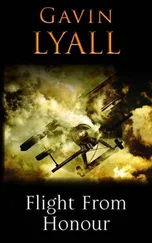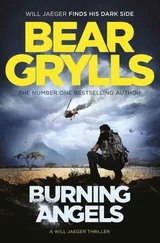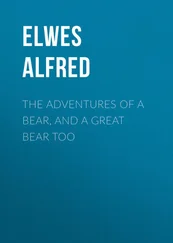Puruwehua drew the knife and tested the keenness of the blade. ‘In my language – kyhe’ia . Sharp, like a spear cut lengthways.’ He glanced at Jaeger. ‘This kyhe’ia – it has drawn the blood of the enemy. It will do so again, Koty’ar.’
‘Puruwehua, thank you – for everything,’ Jaeger told him. ‘I promise one day I’ll return. I’ll come back to your village and share the mother of all monkey roasts in the spirit house – but only if you spare me the nyakwana !’
Puruwehua laughed and agreed that he would. No more shots of psychotropic snuff for William Jaeger any time soon.
Jaeger turned to each of his team in turn. He saved an extra-warm smile for Leticia Santos. She in turn grinned at him and blew him a big Brazilian kiss.
‘Be careful, no?’ she whispered close to his ear. ‘And especially of that… that ja’gwara, Narov. And promise – come pay me a visit next time we have the Rio carnivale ! We’ll get drunk together and go dancing!’
Jaeger smiled. ‘It’s a date.’
With that, the team, commanded by Lewis Alonzo but led by the Amahuaca Indians, hoisted their packs and weapons and disappeared into the jungle.
Raff’s data-burst message was typically short and to the point: Airlander good to go. Secure yourselves. Commencing lift three minutes, 0800 Zulu.
It had come not a moment too soon as far as Jaeger was concerned. During the last few minutes he’d heard gunfire erupt from the jungle to the north – the approach route of the Dark Force.
There had been the sudden fierce crackle of assault rifles, which Jaeger figured was his team springing their ambush, but the return fire had sounded horribly intense, the signature rapid reports of SAW – squad automatic weapon – light machine guns mixing with heavier bursts of what sounded like GPMG fire, plus the hollow crump of grenades.
Such weaponry would cut a murderous swathe through the jungle.
Whoever this Dark Force might be, they were heavily armed, not to mention ready and willing to wage deadly battle. And in spite of the team’s best efforts, they were closing in on Jaeger and the warplane with worrying speed.
Time was running out: the Airlander would commence her lift in 180 seconds, and Jaeger for one couldn’t wait to get airborne.
He hurried down the Ju 390’s dark hold and reached for the rear cargo doors, tugging them closed and securing them with their handle. He moved forward again, skirting around the shadowy ranks of crates, and slammed shut the bulkhead door, locking it firmly behind him.
Dale and Narov had forced open the cockpit’s side windows: once the aircraft got moving, the through-flow of air should help clear it of any toxic fumes. Jaeger took up position in the co-pilot’s seat, and buckled himself into the restraining flight belt and chest harness. Dale was in the pilot’s seat next to him – a position he’d commandeered so he could best film the warplane as she was dragged free from the jungle.
As for Narov, she was hunched over the navigator’s table, and Jaeger had a good idea what she was up to. She was studying one of the documents from the satchel that she’d retrieved from the Ju 390’s cockpit. Jaeger had got a passing glance at it. The writing on the yellowing pages was in German, which meant it was mostly Double Dutch as far as he was concerned.
But he’d half recognised a word or two on the title page. There were the usual TOP SECRET stamps, plus the words Aktion Feuerland . From distantly remembered schoolboy German, Jaeger knew that Feuer meant ‘fire’, and land was obvious. Operation Fire Land. And typed below it was: Liste von Personen.
That needed little translation: ‘List of personnel’.
As far as Jaeger had seen, every last crate lying in the Ju 390’s hold was stamped Aktion Adlerflug : Operation Eagle Flight. So what was Aktion Feuerland – Operation Fire Land? And why Narov’s fascination with it, almost to the exclusion of all else?
There was little time to ponder such matters now.
The lift that the Airlander was about to attempt – that of a Ju 390 packed full of cargo – would be accomplished by a combination of factors. One, aerostatic force – due to the simple fact that the airship’s helium-filled hull was lighter than air.
Two, thrust – the use of the airship’s four huge propulsors, each powered by a 2,350-horsepower gas turbine driving a giant set of propellers. That alone was akin to having four heavy-lift helicopters roped to the corners of the warplane, giving their all.
And three, aerodynamic lift – provided by the Airlander’s laminated fabric hull. It was shaped like a cross section of a conventional aircraft wing, with a flatter underside and a curved upper. That shape alone would provide forty per cent of the lift, but only once the Airlander got moving in a forwards direction.
For the first few hundred feet, she’d be lifting vertically – during which time it was all up to the helium gas and the propulsors.
Jaeger heard the noise from the Airlander shift from a barely audible purr to a hollow roar, as she prepared for the lift. Right now, the four massive sets of rotor blades were set in the horizontal position, to provide maximum vertical thrust as the Airlander went about dragging the warplane free.
The downdraught increased to approaching storm force, blowing a blinding whirlwind of broken branches all around the warplane. It felt to Jaeger as though he was standing behind a monster combine harvester while the machine chewed its way through a field of giant wheat, spitting out the unwanted chaff into his face.
He slammed his side window closed, and gestured for Dale to do likewise, as blasts of rotten wood blew inside. Arguably, they were approaching the single most risk-laden moment of the whole crazy enterprise.
The Ju 390’s standard loaded weight was 53,000 kilos. With a 60,000-kilogram lift capacity, the Airlander should be able to manage the carry – as long as Hans Kammler and his cronies hadn’t overloaded the warplane.
Jaeger had every confidence in the strength of the slings looped beneath the Ju 390’s wings. He had similar confidence in the Airlander’s pilot, Steve McBride. It was whether they’d break free from the dead wood that was the million-dollar question. That, and the trust they were placing in German aeronautical engineering standing up to seven decades of rot and corrosion in the heart of the jungle.
Any error on either count could prove catastrophic. The Ju 390 – and maybe the Airlander with her – would plummet like a stone into the jungle.
Overnight, Jaeger and his team had felled some of the largest trees, using shaped ring-charges of plastic explosives slung around their trunks to blast them down. But they’d been limited both by time and the number of charges they had to hand. As much as fifty per cent of the canopy of dead wood remained intact.
They’d blasted down the largest and least decayed tree trunks – those most likely to put up greatest resistance. They were banking on the fact that the surviving dead wood was rotten, and would break apart as the Airlander dragged the warplane free.
The roar of the propulsors rose to an ear-splitting howl, the downdraught approaching hurricane force. Jaeger could tell that the Airlander was nearing its maximum thrust. He sensed something falling from above, as a dark linear shadow slashed across the cockpit.
A massive tree limb smashed into the apex of the Ju 390’s windscreen, where the front window panels met. The vertical steel strut linking the panels buckled under the blow, the thick Perspex warping under the crushing impact. As the branch broke in two and fell away, a jagged fault line streaked across the windscreen like a burst of forked lightning.
Читать дальше












